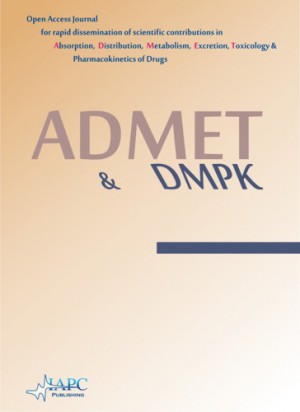
ADMET & DMPK
Yazarlar: Christopher A. Bates, Sherleen Fu, Daniel Ysselstein, Jean - Christophe Rochet, Wei Zheng
Konular:-
DOI:10.5599/admet.3.1.159
Anahtar Kelimeler:A-synuclein transport,Cerebrospinal fluid,Blood-cerebrospinal fluid barrier,Manganese exposure
Özet: The choroid plexus maintains the homeostasis of critical molecules in the brain by regulating their transport between the blood and cerebrospinal fluid (CSF). The current study was designed to investigate the potential role of the blood-CSF barrier (BCSFB) in α-synuclein (a-Syn) transport in the brain as affected by exposure to manganese (Mn), the toxic metal implicated in Parkinsonian disorders. Immunohistochemistry was used to identify intracellular a-Syn expression at the BCSFB. Quantitative real-time PCR was used to quantify the change in a-Syn mRNA expression following Mn treatments at the BCSFB in vitro. ELISA was used to quantify a-Syn levels following in vivo and in vitro treatments of Mn, copper (Cu), and/or external a-Syn. Thioflavin-T assay was used to investigate a-Syn aggregation after incubating with Mn and/or Cu in vitro. A two-chamber Transwell system was used to study a-Syn transport by BCSFB monolayer.Data revealed the expression of endogenous a-Syn in rat choroid plexus tissue and immortalized choroidal epithelial Z310 cells. The cultured primary choroidal epithelia from rats showed the ability to take up a-Syn from extracellular medium and transport a-Syn across the cellular monolayer from the donor to receiver chamber. Exposure of cells with Mn induced intracellular a-Syn accumulation without causing any significant changes in a-Syn mRNA expression. A significant increase in a-Syn aggregation in a cell-free system was observed with the presence of Mn. Moreover, Mn exposure resulted in a significant uptake of a-Syn by primary cells.These data indicate that the BCSFB expresses a-Syn endogenously and is capable of transporting a-Syn across the BCSFB monolayer; Mn exposure apparently increases a-Syn accumulation in the BCSFB by facilitating its uptake and intracellular aggregation.